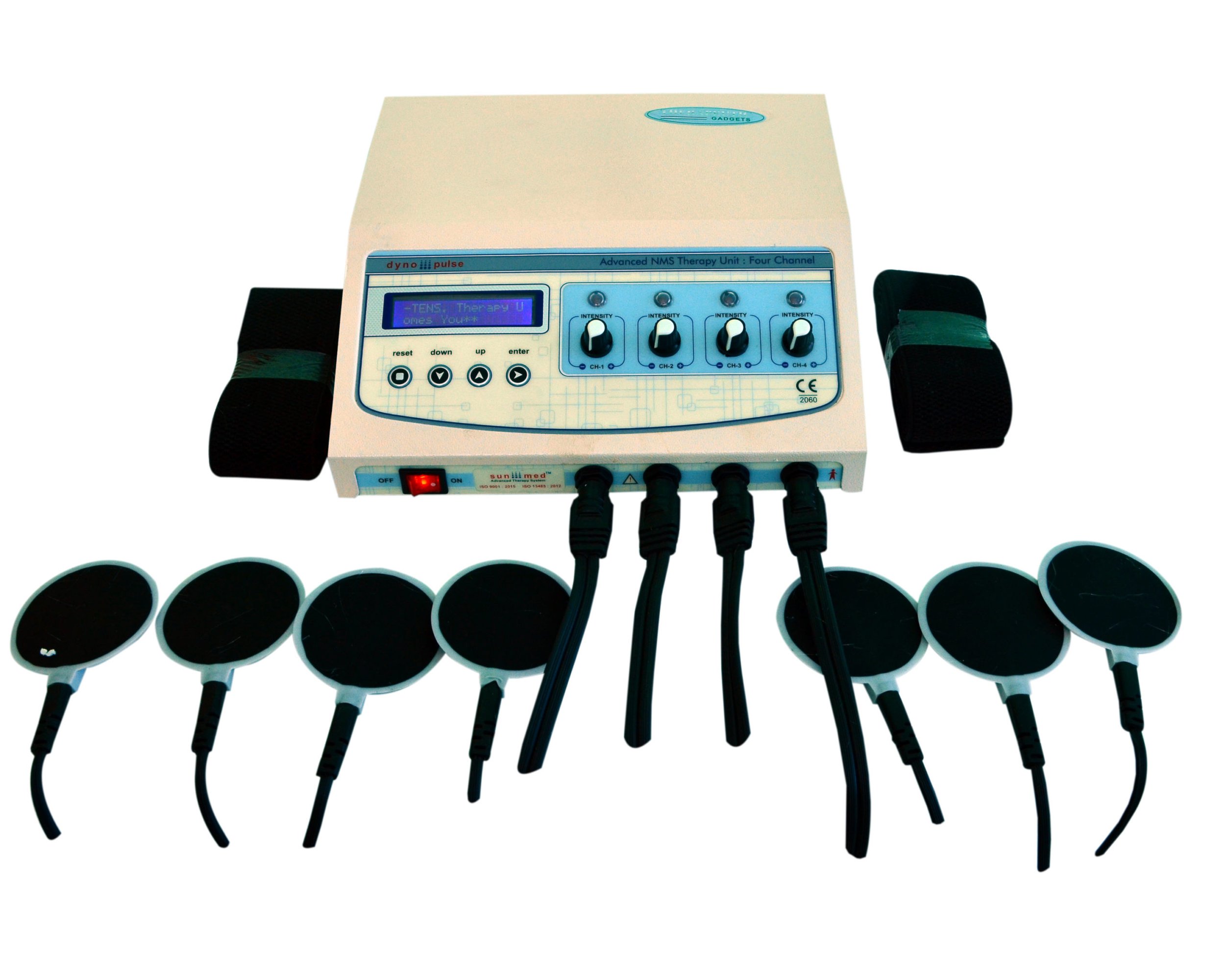Interferential Stimulation or “IF”
Common Uses:
Pre and Post-Orthopedic Surgery
Joint Injury Syndrome
Cumulative Trauma Disorders
Increasing Circulation
Pain Control of Various Origin
Interferential stimulation therapy, or interferential current, is a more complex development of TENS, and is a unique way of effectively delivering therapeutic frequencies to tissue.
While conventional TENS devices deliver electrical pulses at extremely low frequency (typically 2-150 Hz), Interferential stimulation uses medium frequencies — above 1000 Hz, and typically around 4000 Hz. Medium frequencies travel in the tissue much more easily, can go further and deeper, and with less discomfort to the patient.
Interferential stimulation therapy, or interferential current, is a more complex development of TENS, and is a unique way of effectively delivering therapeutic frequencies to tissue.
While conventional TENS devices deliver electrical pulses at extremely low frequency (typically 2-150 Hz), Interferential stimulation uses medium frequencies — above 1000 Hz, and typically around 4000 Hz. Medium frequencies travel in the tissue much more easily, can go further and deeper, and with less discomfort to the patient.
Interferential stimulation is concentrated at the point of intersection between the electrodes. This concentration occurs deep in the tissues as well as at the surface of the skin. Conventional TENS and Neuromuscular stimulators deliver most of the stimulation directly under the electrodes. Thus, with Interferential Stimulators, current perfuses to greater depths and over a larger volume of tissue than other forms of electrical therapy.
Conventional TENS and Neuromuscular Stimulators use discrete electrical pulses delivered at low frequencies of 2-160 Hz per second. However, Interferential stimulators use a fixed carrier frequency of 4,000 Hz per second and also a second adjustable frequency of 4,001-4,400 Hz per second. When the fixed and adjustable frequencies combine (heterodyne), they produce the desired signal frequency (Interference frequency, or beat).
When current is applied to the skin, capacitive skin resistance decreases as pulse frequency increases.’ For example, at a frequency of 4,000 Hz (Interferential unit) capacitive skin resistance is eighty (80) times lower than with a frequency of 50 Hz (in the TENS range). Thus, Interferential current crosses the skin with greater ease and with less stimulation of cutaneous nociceptors allowing greater patient comfort during electrical stimulation.
In addition, because medium-frequency (Interferential) current is tolerated better by the skin, the dosage can be increased, thus improving the ability of the Interferential current to permeate tissues and allowing easier access to deep structures.
This explains why Interferential current may be most suitable for treating patients with deep pain, for promoting osteogenesis in delayed and nonunion fractures and in pseudothrosis, for stimulating deep skeletal muscle to augment the muscle pump mechanism in venous insufficiency, and for depressing the activity of certain cervical and lumbosacral sympathetic ganglia in patients with increased arterial constrictor tone. increased circulation.



